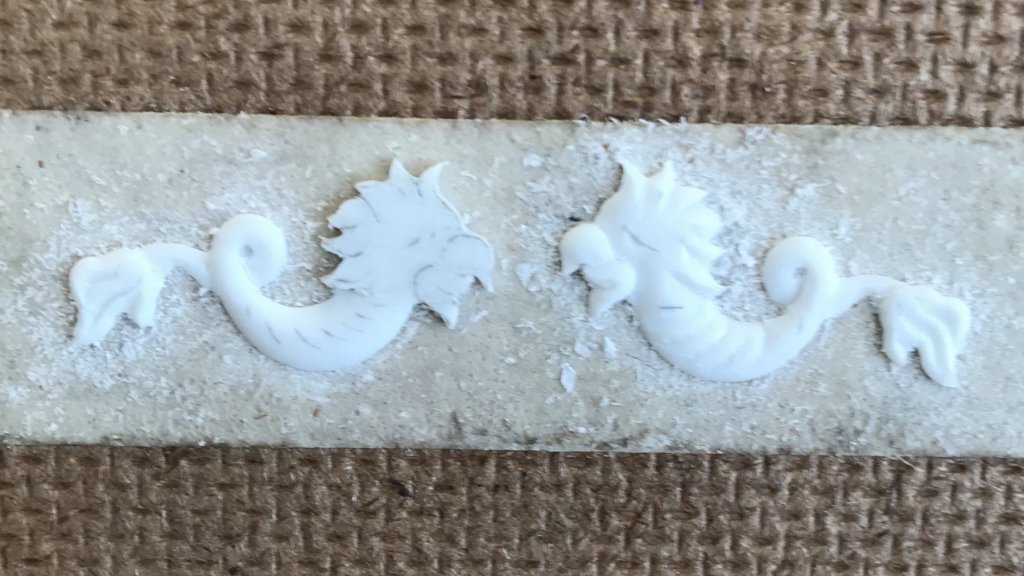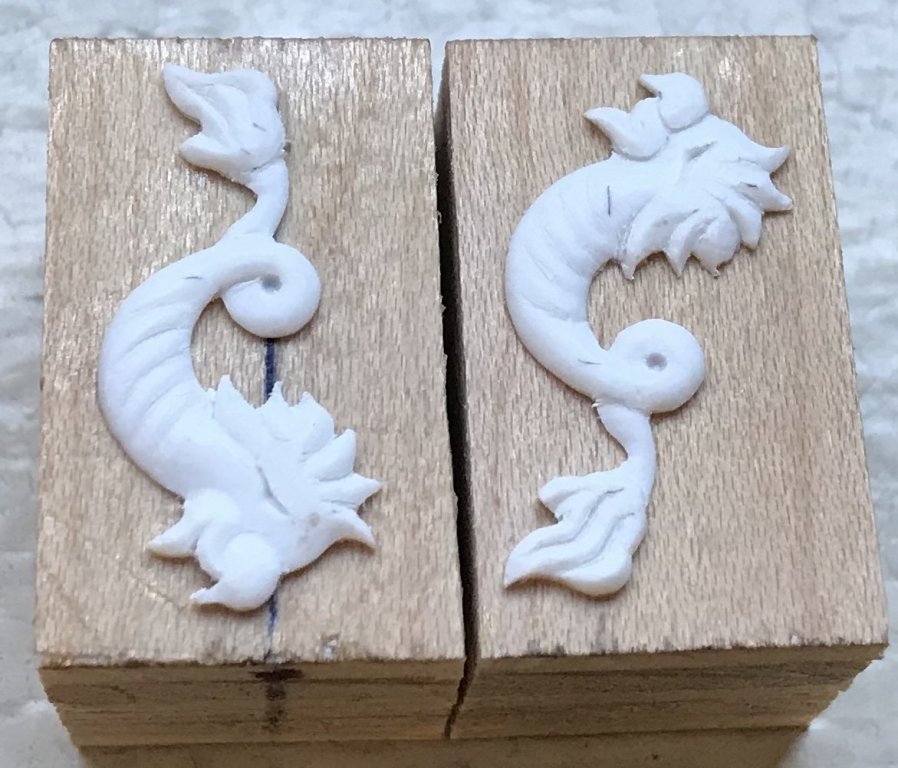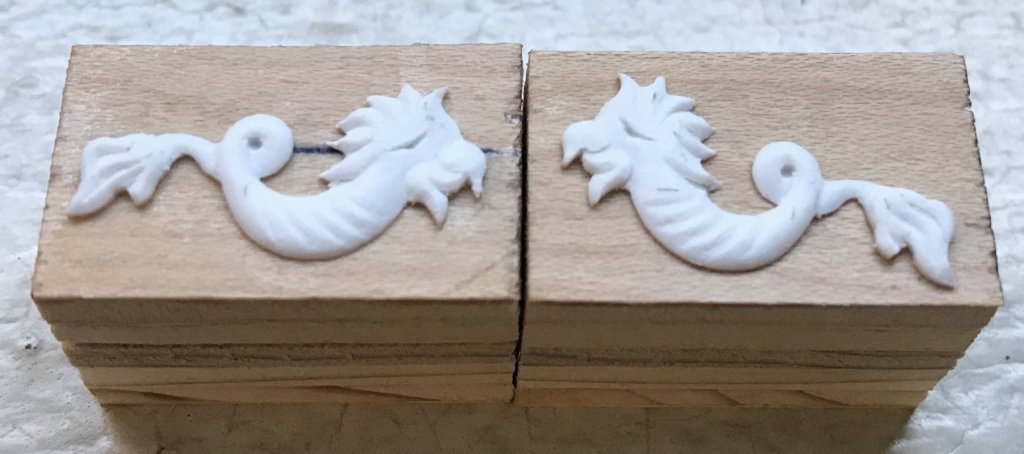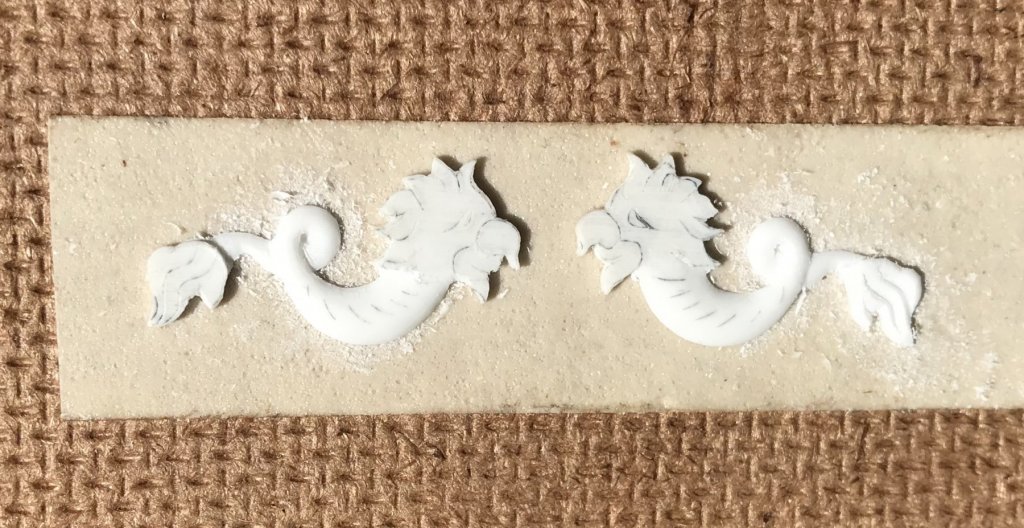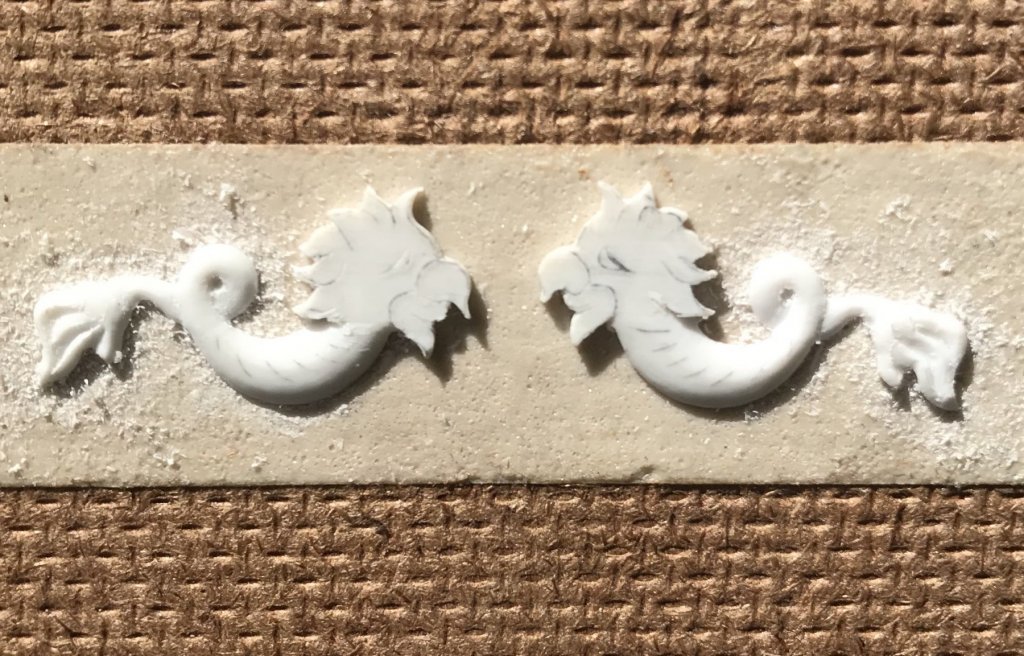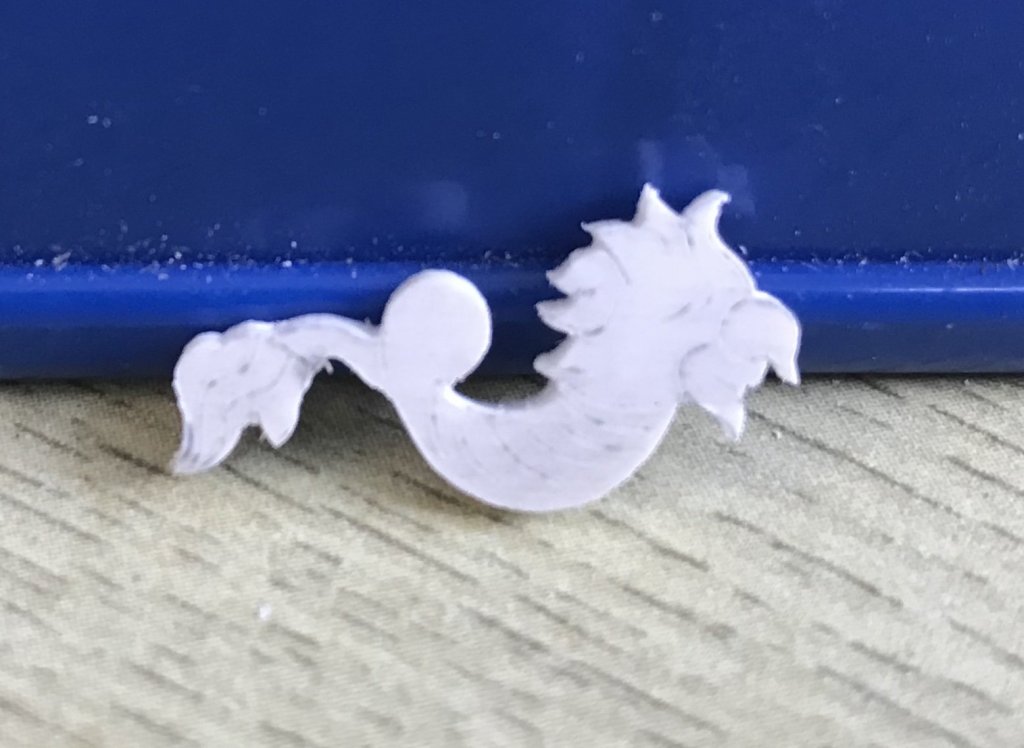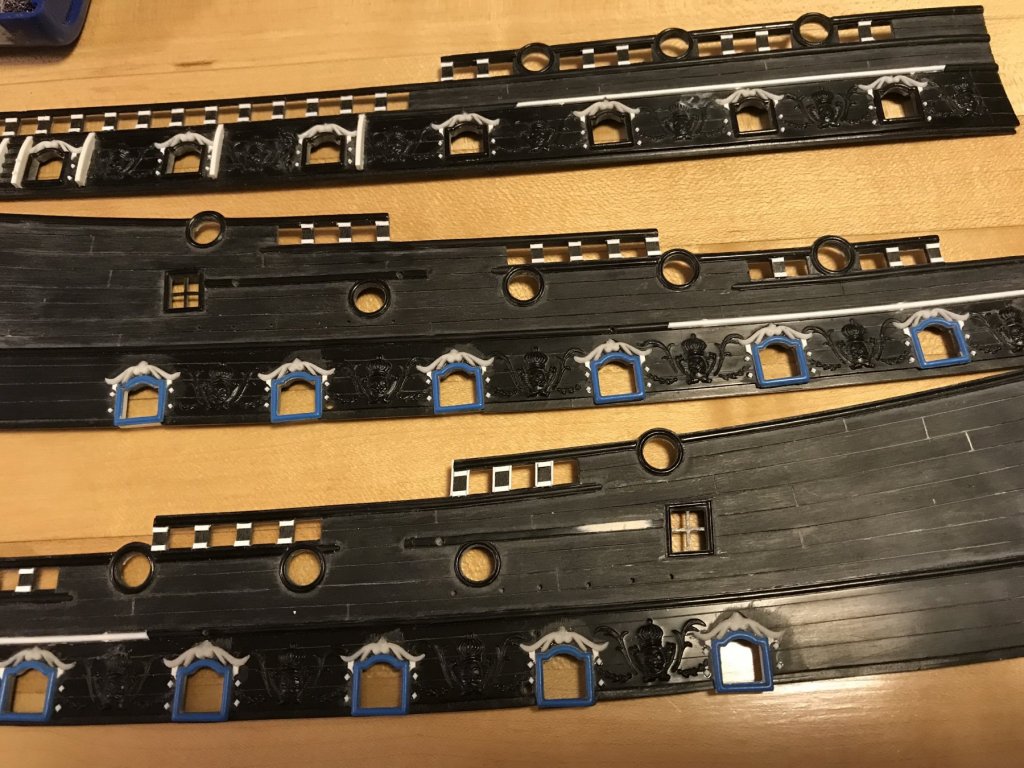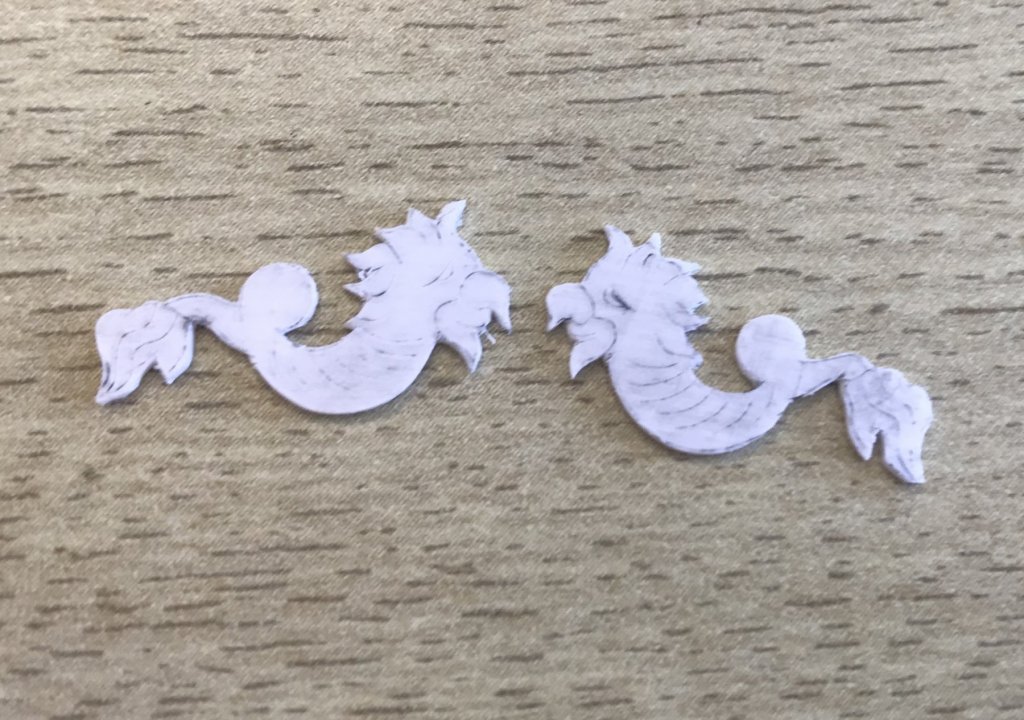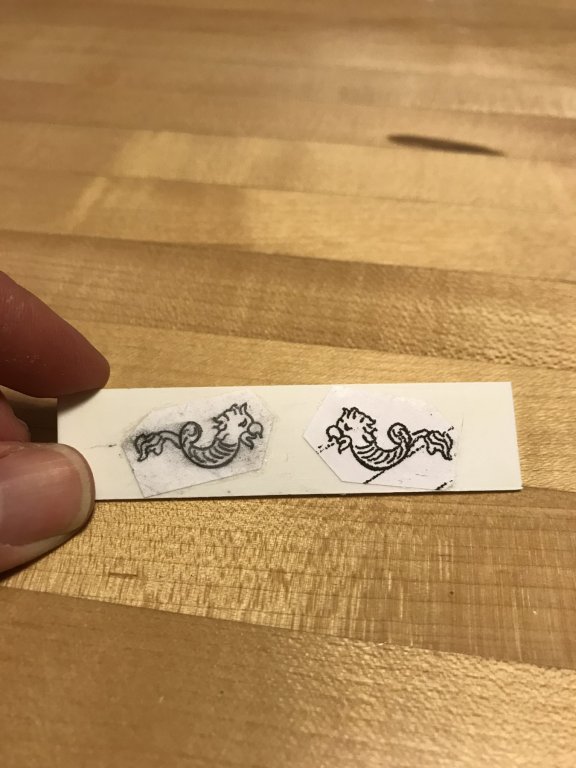-
Posts
3,306 -
Joined
-
Last visited
Content Type
Profiles
Forums
Gallery
Events
Everything posted by Hubac's Historian
-
Truly spectacular, Vic! I know how you feel about those old pirate movies. The studio model-makers, from those days, really did quite a job. I can't wait to see your Couronne cut through the sea.
- 213 replies
-
- la couronne
- 74 gun
-
(and 2 more)
Tagged with:
-
Or, not hopefuly. Maybe I’ll embrace better technology like these upstart, results-oriented Millenials . An amendment - having read this over - I still hope to live a really long time! Going for 9-0!
- 2,699 replies
-
- heller
- soleil royal
-
(and 9 more)
Tagged with:
-
Ha! I’ll be a 45 degree angle in August! Hopefully, plenty of scraping ahead of me.
- 2,699 replies
-
- heller
- soleil royal
-
(and 9 more)
Tagged with:
-
The carving continues; starboard side done, and port not far behind: Ready for central casting! The sides still mate nicely. I’ll be interested to see whether the casting resin holds the fine detail as well as I hope. I had to do a lot of re-work on the arched port enhancements, even though the carving masters looked eye-clean.
- 2,699 replies
-
- heller
- soleil royal
-
(and 9 more)
Tagged with:
-
Just a few work-in-process shots to show the process of shaping and layering in detail: These dolphins, across, are roughly the diameter of a quarter. The tail detail does not perfectly mirror one side to the other, but it doesn’t need to. I’ve saved the trickiest bit - the heads - for last. The difficulty is that, at most, each dolphin half is only a heavy 1/32”, but you have to sink about half of that to delineate the beak/mouth. The eye detail will merely be a suggestion, at best, with a hard line delineating the brow. The hair is the “easy” part When the head is defined, I’ll go back to the body and add in the arced creases, just to give the surface some visual interest. Then, it’s off to casting!
- 2,699 replies
-
- heller
- soleil royal
-
(and 9 more)
Tagged with:
-
Hi Doris, Will you be making up the gun barrels from scratch with rolled card, as you have in the past, or will you use turned brass guns like the sample one on your quarter deck? P.S. I hope you get your mojo back soon.
- 1,035 replies
-
- royal katherine
- ship of the line
-
(and 1 more)
Tagged with:
-
Fine sable brush; good light; controlled breathing; quality acrylics; the willingness to take as much time as is necessary. Those are the ingredients of my technique. I used to be a pro at cutting right up to the ground without bleeding over. I want, for example, to paint not just the outward face of the wales black, but the top edges as well, for a better three-dimensional effect. The space between wales can’t really be masked with tape, so it has to be done by hand. It has been a while, since I did this, but as with most things in life - patience should carry the day. And, of course, there’s always a certain amount of retouching. I am curious to see how well Herbert Tomesan’s patinated wood effect translates to the raised, moulded grain of the Heller kit. Herbert’s models, while scratch-built plastic, are textured with coarse sand paper, and the darker wash coat gets into the scratches. It’s all an experiment, but it should be interesting. And I have plenty of spare plastic, in Henry’s donated hull and my own cut away hull bottom, with which to work up finish samples.
- 2,699 replies
-
- heller
- soleil royal
-
(and 9 more)
Tagged with:
-
The reconcilliation of the two halves worked out neatly enough, and now they are twins. I’ve begun the rounding and relief work, and hope to make moulds and begin casting by the end of the week. In the meantime, I am adding a detail that I often see on the French arsenal-style models to the timberhead faces of the sheer rails. While I like this frame and panel effect for its own sake, I am hoping to accomplish a bit of visual trickery, in an effort to minimize one of the design defects of the kit. It is my opinion that the height of and spacing between the timberheads is exagerated, on the stock kit. The side members of the added frame detail will help close the space between timberheads by almost a 1/16”. And the paintwork will help to focus the eye on the smaller framed panel; I will paint the frame yellow ocher and I will use the darker ultra-marine blue for the sunken panel. The moulding on the outside of the caprails, themselves, will be done in gold, as will the caprail dolphins.
- 2,699 replies
-
- heller
- soleil royal
-
(and 9 more)
Tagged with:
-
Every time I turn around on this site, someone is building my newest, most favorite model. It had been a while since you posted Giorgo, and I had forgotten that Amalio had a peer in the fine art of arsenal modeling. Your Fleuron is a spectacular accomplishment in every way. I am glad to see that you are active again
-
The thought that just occurred to me is that the computer technology available to us today makes it easier than ever to master a build, and thus create a commercial kit, and furthermore (oh, yes, I raised it to that level of furthermore) to interest young people, kids, in the hobby. The primary obstacles to creating good, off the shelf and interesting scale models seem to be lifted now. I am all for modelers creating projects from scratch, however, we can only approach that ambition through our introduction to the hobby, via kits. As a parent, I realize this is a nurture vs. nature issue. At the same time, though, the whole concept of the “hobby shop” seems like a relic of bygone times. Not to soap-box too much, and if anything - to express my admiration for your drive to create your own model. Just thinking out loud. Just waxing on the shifting tides of generations.
- 132 replies
-
- charles martel
- battleship
-
(and 1 more)
Tagged with:
-
There is the frame of thought that supposes that, if five people all build the same model to the same plans - then you are very likely to see five very different models. While I believe that to be true, Sigi, I think your discernment brings you closest to the truth; a fantastic build in subject, form, material and execution. For me, it’s all about the lines, and your lines look true to me.
-
I like the lines of this ship and will follow along. It seems that there is much to be gleaned from your methods in computer work, here, and I look forward to seeing the 3D translation.
- 132 replies
-
- charles martel
- battleship
-
(and 1 more)
Tagged with:
-
Hello Drazen, Fantastic small work on the doors. By the “door grip,” do you mean the strop hinges? Are the doors intended to open inward or outward?
- 487 replies
-
- ship of the line
- 80 guns
-
(and 1 more)
Tagged with:
-
Impressive job on the restoration! This model bears a reasonable resemblance to the Wavertree, at South Street Seaport, in NYC, which has, itself, just recently undergone a fairly significant restoration of her interior bulkheads, exterior plating and masts and spars. Work, there, is on-going.
- 53 replies
-
- clipper
- restoration
-
(and 1 more)
Tagged with:
-
So, now I have left and right kissing cousins that are not yet identical. I will paste together both profiles, temporarily, and true them up with needle files and a blade before rough contouring. Then, I’ll mount them to my small masonite backer and carve in some detail. I’m not sure this first attempt is going to work out as well as I planned, but maybe it will still be good after the reconciliation. We’ll see.
- 2,699 replies
-
- heller
- soleil royal
-
(and 9 more)
Tagged with:
-
Wow, Doris!! The difference is night and day. You really nailed it this time!
- 1,035 replies
-
- royal katherine
- ship of the line
-
(and 1 more)
Tagged with:
-
To me it seems that the greatest difficulty with this sort of reconstruction is the fact that the subtleties of shape and detail rarely translate well in these original portraits. If anyone is up to the challenge, though, it is you Doris. Thank you for taking my opinion in stride.
- 1,035 replies
-
- royal katherine
- ship of the line
-
(and 1 more)
Tagged with:
-
Hello Doris, You have made remarkable progress on your beautiful ship. One question occurs to me, at this stage of your build: will you be detailing/furnishing/populating the great cabin as you have done on previous models? Are the decks fixed in place, yet? An observation: it is interesting to me how simply adding the arched framework to the aft window of the quarter gallery softens the architecture and unifies the whole composition. And now I will levy a small critique, which I offer to you despite, or perhaps because of my great admiration for your artistry in sculpture. So far, all of the tiny figures that fill the spaces between the caryatids are magnificently and delicately rendered. They are exquisite. In my opinion, though, the face of Katherine lacks that finesse and definition of feature that are hallmarks of your work. The figure is good, but it is not your best, and I wouldn’t dare mention it, if I didn’t think you were capable of improving it. And, also, she occupies the most prime real estate on the ship. Please take this with the proverbial grain of salt, and the knowledge that I could do no better myself. This is a special model, Doris, and I want for this to be your best model yet - which despite the magnificent Caroline, it is. As always, I am truly humbled by your special talent.
- 1,035 replies
-
- royal katherine
- ship of the line
-
(and 1 more)
Tagged with:
-
Caprail thicknessing complete. Next, I will carve left and right masters for the hancing-piece dolphins. I’ll need 8 pairs for each step in the sheer, including the forecastle. The styrene is 3/64”, so the assembled ornament will be a little thinner than the now thickened cap rails. Same process as before - carving, making moulds and castings, etc.
- 2,699 replies
-
- heller
- soleil royal
-
(and 9 more)
Tagged with:
About us
Modelshipworld - Advancing Ship Modeling through Research
SSL Secured
Your security is important for us so this Website is SSL-Secured
NRG Mailing Address
Nautical Research Guild
237 South Lincoln Street
Westmont IL, 60559-1917
Model Ship World ® and the MSW logo are Registered Trademarks, and belong to the Nautical Research Guild (United States Patent and Trademark Office: No. 6,929,264 & No. 6,929,274, registered Dec. 20, 2022)
Helpful Links
About the NRG
If you enjoy building ship models that are historically accurate as well as beautiful, then The Nautical Research Guild (NRG) is just right for you.
The Guild is a non-profit educational organization whose mission is to “Advance Ship Modeling Through Research”. We provide support to our members in their efforts to raise the quality of their model ships.
The Nautical Research Guild has published our world-renowned quarterly magazine, The Nautical Research Journal, since 1955. The pages of the Journal are full of articles by accomplished ship modelers who show you how they create those exquisite details on their models, and by maritime historians who show you the correct details to build. The Journal is available in both print and digital editions. Go to the NRG web site (www.thenrg.org) to download a complimentary digital copy of the Journal. The NRG also publishes plan sets, books and compilations of back issues of the Journal and the former Ships in Scale and Model Ship Builder magazines.




